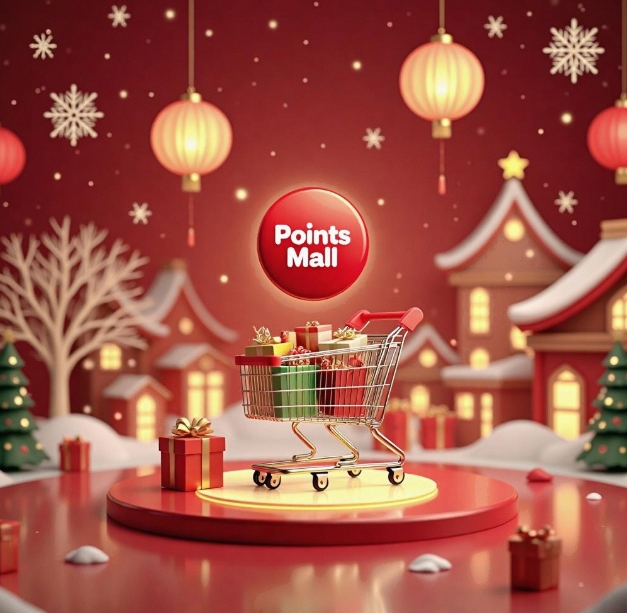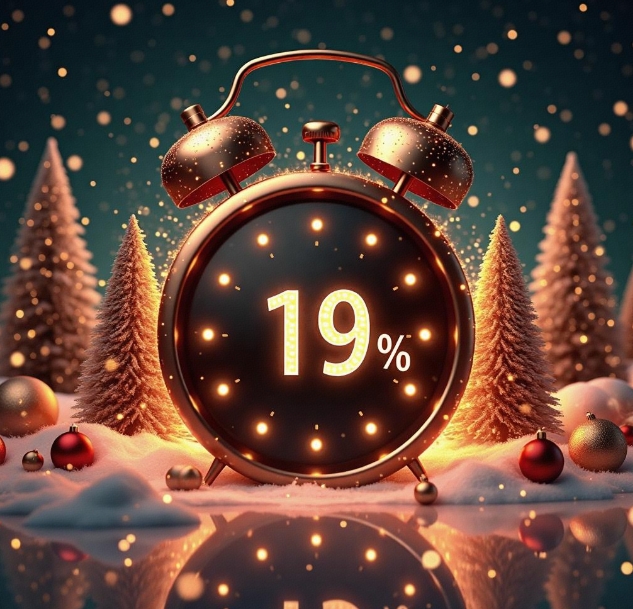How can an integral mall enhance conversion rates by integrating holiday activities?
- latest articles
- 1.DApp Development & Customization: Merging Diverse Market Needs with User Experience 2.Analysis of the Core Technical System in DApp Project Development 3.How to achieve cross-chain interoperability in Web3 projects? 4.How does the tokenization of points reconstruct the e-commerce ecosystem? 5.How to Set and Track Data Metrics for a Points Mall? 6.What is DApp Development? Core Concepts and Technical Analysis 7.Inventory of commonly used Web3 development tools and usage tips 8.Development of a Distribution System Integrated with Social E-commerce 9.Six Key Steps for Businesses to Build a Points Mall System 10.What is DApp Development? A Comprehensive Guide from Concept to Implementation
- Popular Articles
- 1.Future Trends and Technology Predictions for APP Development in 2025 2.Analysis of the DeFi Ecosystem: How Developers Can Participate in Decentralized Finance Innovation 3.From Zero to One: How PI Mall Revolutionizes the Traditional E-commerce Model 4.DAPP Development | Best Practices for Professional Customization and Rapid Launch 5.Recommended by the Web3 developer community: the most noteworthy forums and resources 6.How to Develop a Successful Douyin Mini Program: Technical Architecture and Best Practices 7.From Cloud Computing to Computing Power Leasing: Building a Flexible and Scalable Computing Resource Platform 8.Shared Bike System APP: The Convenient Choice in the Era of Smart Travel 9.How to Create a Successful Dating App: From Needs Analysis to User Experience Design 10.From Design to Development: The Complete Process of Bringing an APP Idea to Life
In the modern e-commerce landscape, loyalty point malls have become a crucial tool for interaction between merchants and consumers. Through point systems, merchants can not only incentivize purchases but also enhance user loyalty and satisfaction. As holidays approach, how to integrate holiday activities to boost the conversion rate of point malls has become a key focus for many businesses. This article will explore how to leverage holiday events to design outstanding marketing strategies for point malls, thereby increasing conversion rates.
I. Basic Functions and Roles of Point Malls
A point mall is a shopping system provided by merchants where consumers can accumulate points to redeem goods or services. In this system, consumers earn points through purchases, reviews, sharing, and other activities, ultimately using them to exchange for products or enjoy discounts. Such a system not only encourages more purchases and increases repeat business but also enhances user engagement and strengthens the brand's long-term competitiveness.
The main functions of a point mall include:
Incentivizing Consumption: Consumers accumulate points by purchasing goods or participating in activities, creating a motivational mechanism for buying behavior.
Increasing User Engagement: Points are virtual, cumulative resources that encourage users to return to the mall for repeated purchases.
Enhancing Brand Loyalty: Through point malls, brands can foster a sense of consumer identification with the brand, thereby boosting brand loyalty.
However, the operation of a point mall alone may sometimes lack appeal or sufficient incentives, leading to limited improvements in conversion rates. Especially during holidays and other special occasions, how to cleverly integrate holiday activities to enhance the mall's attractiveness and conversion rate becomes a critical issue for merchants to address.
II. The Impact of Holiday Activities
Holiday activities have a profound psychological impact on consumers. Holidays are not only peak shopping periods but also times when consumers are eager to participate in various promotional activities. Both traditional holidays (such as Spring Festival, National Day) and non-traditional ones (like "Singles' Day," "618" e-commerce festivals) stimulate consumers' purchasing desires. This holiday sentiment makes consumers more willing to accept favorable conditions and more prone to impulse buying.
The core characteristics of holiday activities are:
Emotion-Driven: Holidays often carry strong emotional connotations, prompting consumers to enjoy the shopping experience, seek suitable gifts, or indulge themselves.
Promotion-Driven: Holiday promotions typically feature significant discounts or freebies, attracting consumers and sparking purchase desires.
Socially-Driven: Holidays are not just times for personal consumption but also important moments for social interactions. Many consumers buy gifts for friends and family or share their shopping experiences during holiday promotions.
Based on this, merchants should fully leverage the shopping frenzy and emotional drive brought by holidays to design appealing point mall activities, thereby enhancing consumer participation and purchase conversion rates.
III. Strategies to Boost Conversion by Integrating Holiday Activities
The key to enhancing point mall conversion rates through holiday activities lies in how to attract consumer participation and maximize conversion through careful event design and promotional strategies. Here are several common and effective strategies:
1. Holiday Limited-Time Double Points Events
During holiday promotions, merchants can set up "limited-time double points" or "bonus points" events. For example, on specific dates of the holiday, consumers earn double points for purchases, creating a sense of urgency and boosting purchasing enthusiasm in the short term.
For instance, during the Spring Festival, merchants can launch a "Spring Festival Limited-Time Double Points" event where consumers earn double points for buying designated products or completing specific tasks. This strategy quickly enhances purchase motivation and reinforces the holiday atmosphere.
2. Holiday-Exclusive Redemption Items
Holiday-exclusive redemption items can greatly stimulate consumers' purchase desires. For example, merchants can introduce limited-edition products or holiday specials that are only available for redemption with points. This not only enhances the uniqueness of the point mall but also encourages consumers to accumulate points through purchases.
For instance, during "Singles' Day," e-commerce platforms can offer limited-edition gift boxes, custom products, or unique holiday bundles that are exclusively redeemable with points or require a minimum purchase amount. Such exclusive items effectively spark purchase desires and boost overall conversion rates.
3. Holiday-Themed Points Lottery Events
Points lottery events are a common promotional method used by many merchants. During holidays, themed lottery events can be designed to align with the festive atmosphere, encouraging participation and increasing purchase frequency. Merchants can set different lottery tiers with various prizes, allowing consumers to enjoy surprises and fun while shopping.
For example, during the Spring Festival, merchants can host a "Spring Festival Grand Lottery" where consumers get a lottery chance for every certain amount spent, with prizes including points, cash vouchers, free products, etc. This approach not only increases purchase frequency but also enhances user engagement through the lottery format, boosting conversion rates.
4. Holiday Joint Promotions and Points Interoperability
During holiday promotions, merchants can also consider joint promotions with other brands or platforms, using points interoperability or cross-platform activities to increase traffic and conversion rates. For instance, an e-commerce platform partnering with offline retailers can allow users to earn points online and use them for cash discounts at partner stores, and vice versa. Such collaborations attract more consumers and integrate online and offline channels, enhancing brand influence.
5. Limited-Time Holiday Points Packages
Limited-time holiday points packages are a highly attractive marketing tactic. Merchants can offer limited holiday packages that consumers obtain by purchasing specified products, with the packages containing extra points or special discounts. This strategy not only stimulates purchase desires but also increases merchant exposure.
For example, during "618," merchants can launch "618 Limited Points Packages," available to consumers who buy specific items or meet spending thresholds. The points in these packages can be used to redeem more products or enjoy additional discounts. The scarcity of limited packages and the holiday vibe will drive purchase desires, thereby improving conversion rates.
6. Holiday Member-Exclusive Points Benefits
Merchants can offer member-exclusive points benefits during holiday events. For instance, members might earn a higher points ratio than regular consumers or have access to exclusive redemption items. By enhancing member perks, merchants can encourage consumer registration and membership conversion while boosting conversion rates during holiday campaigns.
For example, merchants can run a "Member-Exclusive Points Boost" event during holidays, where members earn more points per purchase and access holiday-only redemption items. This strategy not only increases member activity but also attracts more consumers to join the membership program.
IV. Summary
Holiday activities present a significant opportunity to increase point mall conversion rates. By skillfully combining holiday ambiance, emotional drivers, and promotional strategies, merchants can maximize consumer purchase desires and enhance mall conversion rates. When designing holiday activities, merchants should not only consider the uniqueness of the holiday but also employ innovative marketing techniques to create appealing and conversion-boosting events, standing out in the competitive market.
Through methods like limited-time double points, holiday-exclusive redemption items, points lotteries, joint promotions, limited packages, and member-exclusive benefits, merchants can effectively enhance the appeal and conversion effectiveness of point malls. In summary, the integration of holiday activities with point malls is a key factor in boosting conversion rates. Merchants should seize this opportunity to develop precise and effective marketing strategies, bringing more users and sales growth to their brands.
-

How does the tokenization of points reconstruct the e-commerce ecosystem?
With the continuous advancement of internet technology and the gradual prolifera···
-

How to Set and Track Data Metrics for a Points Mall?
With the rapid development of the e-commerce industry, points malls, as a common···
-

Development of a Distribution System Integrated with Social E-commerce
With the rapid development of internet technology, the e-commerce industry has e···

 Blockchain
Blockchain












